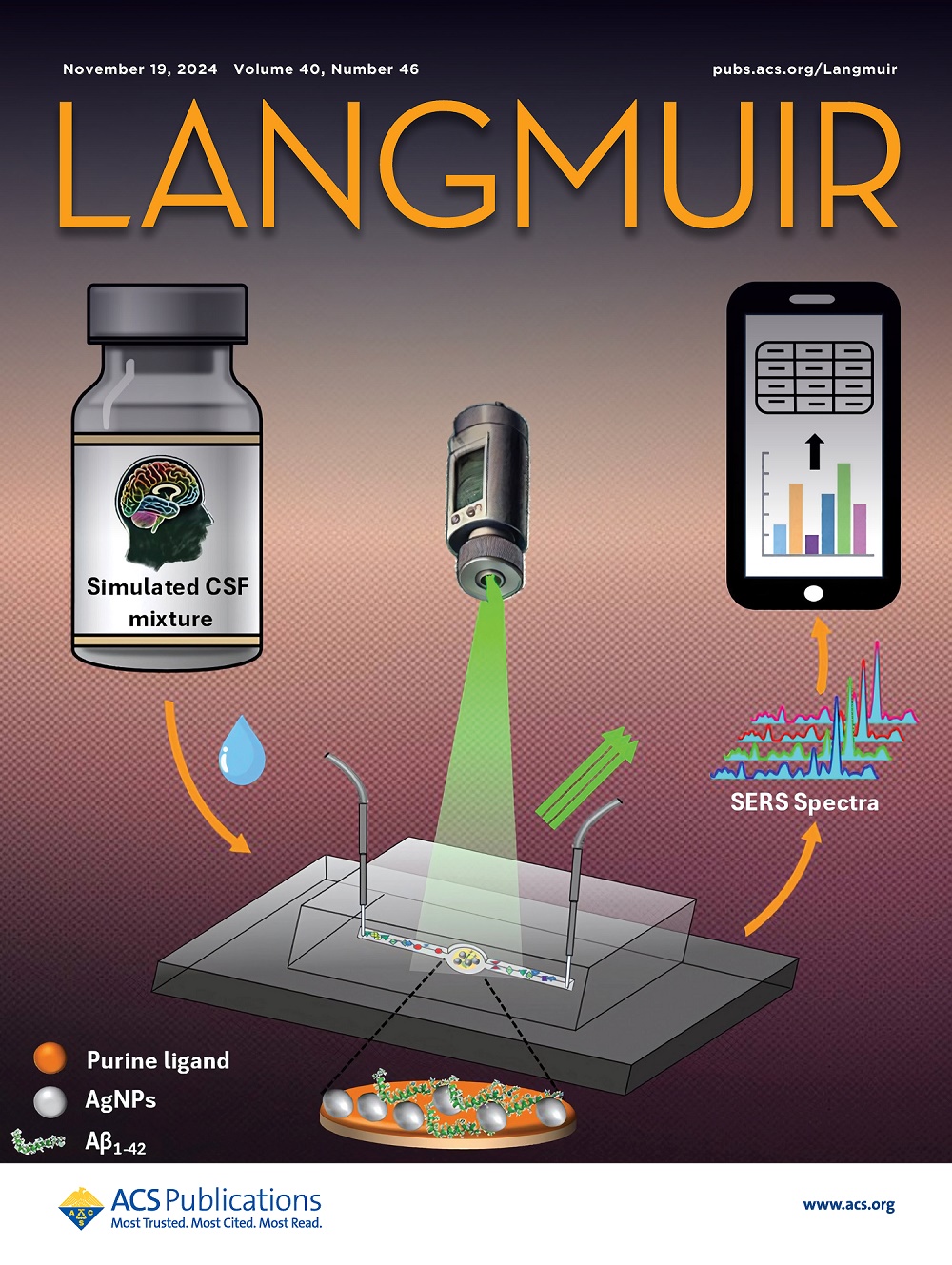用第一性原理模拟量化CO2电化学还原下铜表面重构的驱动力。
IF 3.7
2区 化学
Q2 CHEMISTRY, MULTIDISCIPLINARY
引用次数: 0
摘要
Cu具有将CO2转化为C2+产物的独特能力,是电化学CO2还原反应(CO2RR)中应用最广泛的催化剂之一。而Cu的表面重构对Cu催化剂的活性和稳定性影响较大。本文采用密度泛函理论(DFT)结合隐式溶剂化从头算分子动力学(AIMD)揭示了CO2RR作用下结构演化过程中表面Cu原子可能的迁移路径。表面能作为表面重构的内在热力学驱动力,分布在单个表面Cu原子上,与它们的广义配位数(GCN)呈准线性关系,在外加电场作用下,表面能的最大驱动力为~ 1.10 eV。*CO吸附物削弱了表面Cu原子的结合,导致Cu原子的最大垂直位移可达0.8 Å。相反,在高覆盖下,Cu(100)上的*H在表面Cu原子上产生水平挤压效应,使它们向上移动到2 Å。在AIMD运行中,表面Cu原子的迁移只发生在Cu吸附原子上,吸附纯*H或*CO和*H的共吸附。本文章由计算机程序翻译,如有差异,请以英文原文为准。
Quantifying the Driving Force for the Surface Reconstruction of Copper under Electrochemical Reduction of CO2 by First-Principles Simulations.
Cu is one of the most widely used catalysts in the electrochemical CO2 reduction reaction (CO2RR) due to its unique ability to convert CO2 to C2+ products. However, surface reconstruction of Cu significantly affects the activity and stability of Cu catalyst. In this work, density functional theory (DFT) coupled with implicit solvation ab initio molecular dynamics (AIMD) was employed to unveil the possible migration pathways of surface Cu atoms during the structural evolution processes under CO2RR. Surface energy, as the intrinsic thermodynamic driving force of surface reconstruction, is distributed to individual surface Cu atoms and shows a quasi-linear relationship with their generalized coordination number (GCN), demonstrating a maximum driving force of ∼1.10 eV under the applied electric field. The *CO adsorbate weakens the binding of surface Cu atoms, resulting in a maximum vertical displacement of Cu atoms of up to 0.8 Å. In contrast, *H on Cu(100) at high coverage induces a horizontal extruding effect on the surface Cu atoms, causing them to move up to 2 Å. The observable migration of surface Cu atoms in the AIMD run occurs only on Cu adatoms, with the adsorption of pure *H or coadsorption of *CO and *H.
求助全文
通过发布文献求助,成功后即可免费获取论文全文。
去求助
来源期刊

Langmuir
化学-材料科学:综合
CiteScore
6.50
自引率
10.30%
发文量
1464
审稿时长
2.1 months
期刊介绍:
Langmuir is an interdisciplinary journal publishing articles in the following subject categories:
Colloids: surfactants and self-assembly, dispersions, emulsions, foams
Interfaces: adsorption, reactions, films, forces
Biological Interfaces: biocolloids, biomolecular and biomimetic materials
Materials: nano- and mesostructured materials, polymers, gels, liquid crystals
Electrochemistry: interfacial charge transfer, charge transport, electrocatalysis, electrokinetic phenomena, bioelectrochemistry
Devices and Applications: sensors, fluidics, patterning, catalysis, photonic crystals
However, when high-impact, original work is submitted that does not fit within the above categories, decisions to accept or decline such papers will be based on one criteria: What Would Irving Do?
Langmuir ranks #2 in citations out of 136 journals in the category of Physical Chemistry with 113,157 total citations. The journal received an Impact Factor of 4.384*.
This journal is also indexed in the categories of Materials Science (ranked #1) and Multidisciplinary Chemistry (ranked #5).
 求助内容:
求助内容: 应助结果提醒方式:
应助结果提醒方式:


